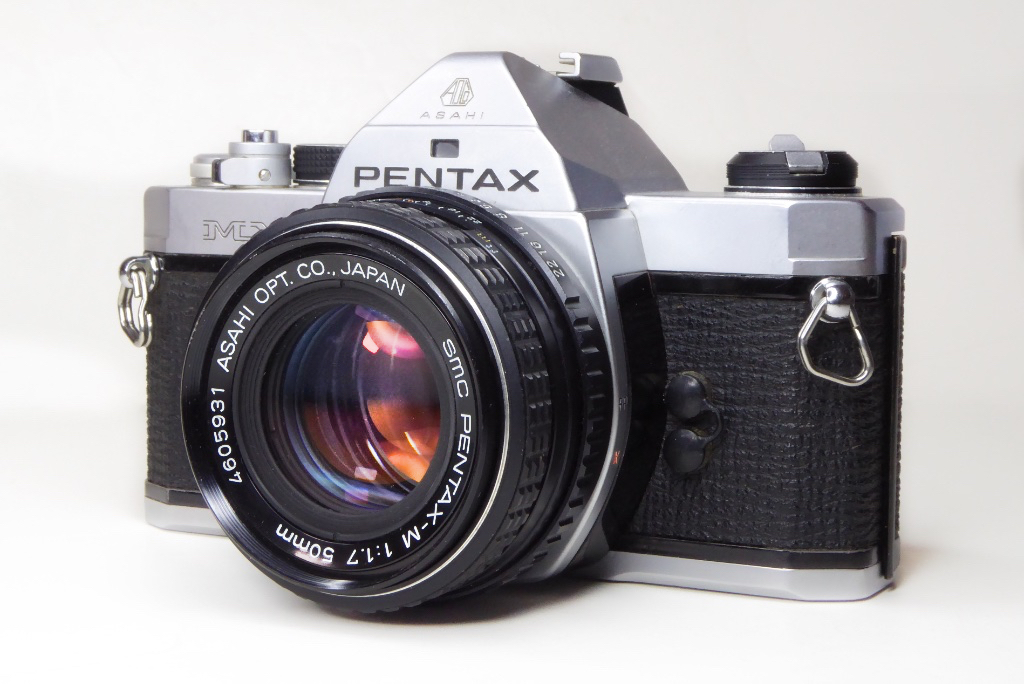
Endings are strange things. It’s often hard to see where the ending of anything is until years after the event. Rome wasn’t built in a day they say but it didn’t fall in a day either. It’s only on reflection, after the passage of time, that you can put a pin in a calendar and say, ‘this marks the beginning of the end’. So it was to be for the Pentax MX. The last fully mechanical camera to come from any major manufacturer.
When Olympus Launched the OM-1 system in 1972 it was a game changer. Prior to 1972 35mm SLR cameras had gotten more sophisticated and quality had steadily increased but at the cost of weight and size. Until the OM-1 it would be fair to say cameras had bloated in a kind of bigger is best way.
The OM-1 forced a rethink on the industry. Some fine cameras had an early demise because of it. Olympus launched it with a whole slew of accessories and lenses to assure its success and against its somewhat bloated competition the OM-1 was quick at winning friends. David Bailey promoting it at every opportunity probably didn’t hurt it either. Some pros avoided it, feeling its lightweight looks may translate as not hardy enough and they stuck solidly to their Nikon Fs as pros are wont to do.
For many others though the OM-1 really cut the mustard with its tiny size and glamorous looks. Sleek and refined like a racehorse. Underneath the skin though the OM-1 is a relatively simple beast with little in the way of automation. It has through the lens (TTL) open aperture metering but that’s about it on the technical gizmo side of things. It also featured a very wide and bright viewfinder although there’s no aperture or shutter speed readout. The OM-1 has just a simple needle to show whether exposure is correct. I remember stepping up from a Pentax Spotmatic with stop down only metering and being blown away by how big a field of view the OM-1 created and the brightness of its focus screen. Of course the OM-1 had its foibles like the shutter speed being on a ring around the lens but it was still a magnificent jump from the Spotmatic with its old school stop down metering and fiddly M42 thread mounted lenses.
So there it was. By 1974 the OM-1 was busy eating the big fours dinners and the big 4 (Pentax, Nikon, Canon and Minolta) now became the big 5. What would the original big 4 do to counteract this upstart pretender?
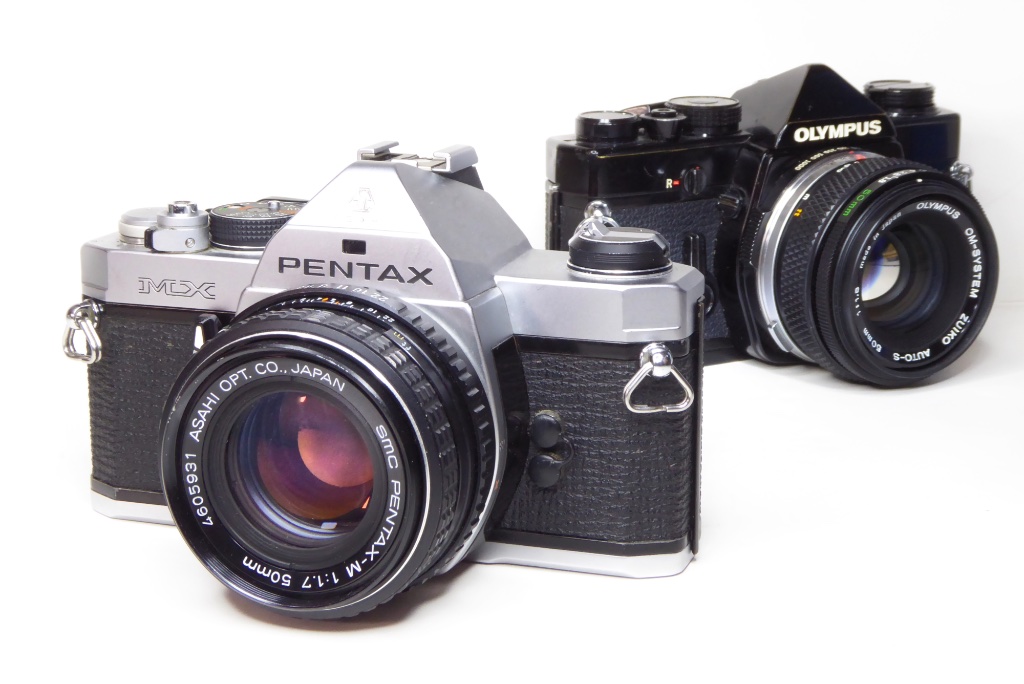
Nikon of course completely ignored it – They already had the pros, hook line and sinker so why worry. Other manufacturers like Canon and Minolta had tried in the past to wrest the pro market away from Nikon but had never succeeded and so were the people losing most from the OM-1 tucking into their dinner.
Minolta and Canon had their own antidotes and strategies to the upstart Olympus. Canon would launch the AE-1 and get the price down for Joe Blow with a camera made from silicon chips and plastic. Minolta would crunch their now bloated looking XE down in size and produce the XD – barely bigger than an OM-1 but Minolta managed to cram in Aperture Priority Auto, Shutter Priority Auto (biff, take that Canon) and topped it off with a Program Mode (another poke in the eye for Canon). Then topped that lot off with an even brighter focusing screen, vertical metal bladed stepless shutter and a final check metering system which would constantly adjust shutter speed up to the moment of taking the actual picture – in short a techno challenge to Olympus. “OK matey” Minolta smirked, “let’s see you top that lot and keep the size fashionable“.
With Canon going all plastic and silicon and Minolta turning up the heat on the technology it left Pentax seeking a chair to grab in the endless game of musical chairs among the big boys. Pentax had been steadily losing market share almost from the moment they started the 35mm SLR market so they had to find an antidote to the upstart OM-1.
Pentax back then were stuck firmly in the middle market aka the middle class buyers with spare cash to spend (remember these things cost serious money back in the day) but not enough passion to take a second mortgage on a Nikon. It would fall on Pentax to build the real contender to the OM-1. While this would never be the huge success in its day ( only an estimated 1 million units sold in almost 10 years) it would go on to be one of the best loved cameras ever to come out of Pentax. The Pentax MX.
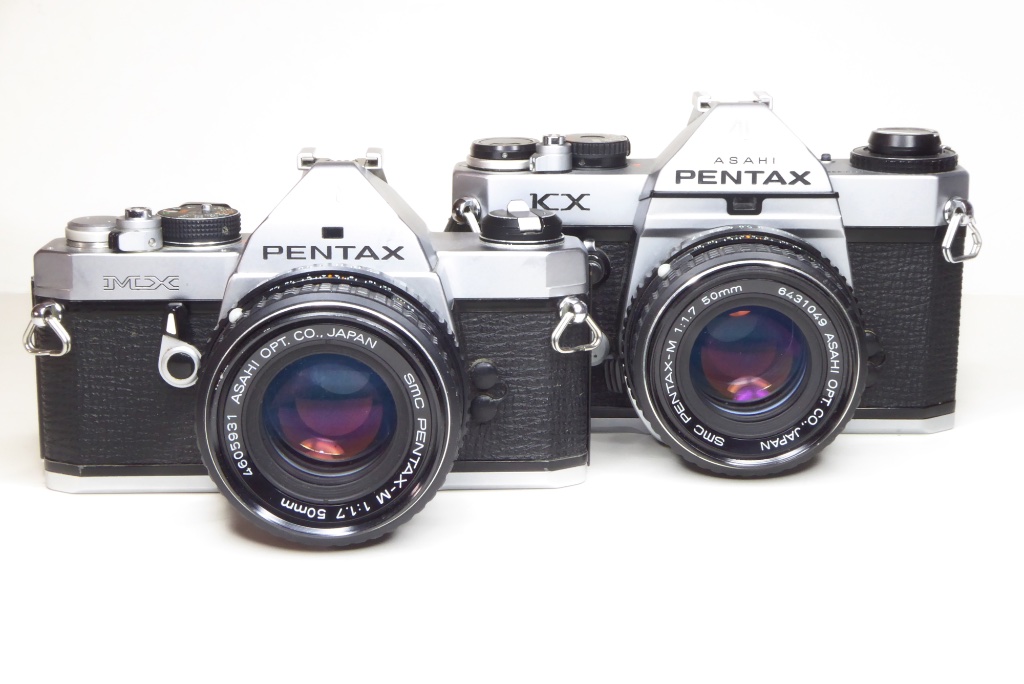
The origins of the MX lay in its immediate predecessor the KX. The KX launched the new Pentax ‘K ‘mount as Pentax finally woke up to the fact that M42 threaded lens mounts and stop down metering of their previous generation were yesterdays news and badly outclassed. It would be the flagship of the ‘K ‘series which would comprise the mid market KM and the budget priced entry model the K1000. The KX is a beautiful camera in its own right, almost Nikon like in its feature set and build quality but like Minoltas equally beautiful XE they were deader than fried chicken once the OM-1 changed the game to compact sized.
Minoltas apparent antidote to the OM-1 was same size (more or less) but with a whole array of features – this was natural for Minolta as they were always pioneers and always pushing the technology envelope . The Pentax approach was play the OM-1 at its own game. I said at the start of this that the OM-1, apart from its size, is not a particularly technological camera and Pentax would play the Olympus game of small size and low tech.
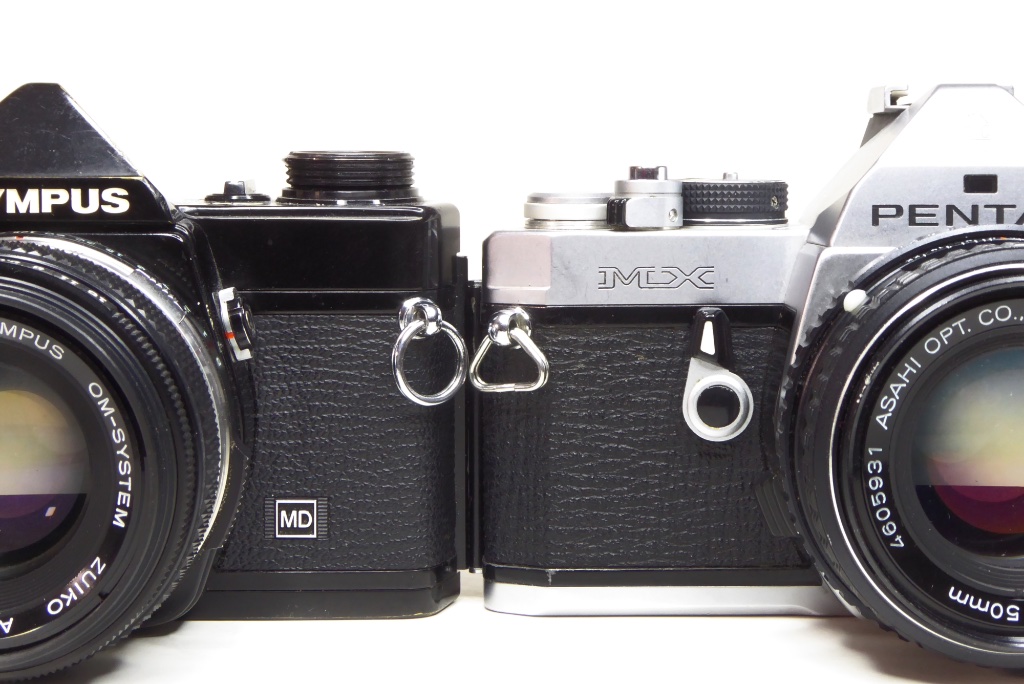
So the MX is basically a low tech / no tech camera, using a traditional fully mechanical mechanism with its controls laid out where most people familiar with 35mm SLRs would expect them. After all it was Pentax who originated the control layout on most film cameras and for years no one had changed it for fear of being different. Olympus did and there are still people moaning about it decades after the camera ceased production!
Pentax split their bets in many ways because the running mate to the MX was the ME and ME Super which were all electronic and aimed more at the beginner market and were mainly geared for Auto Mode shooting..
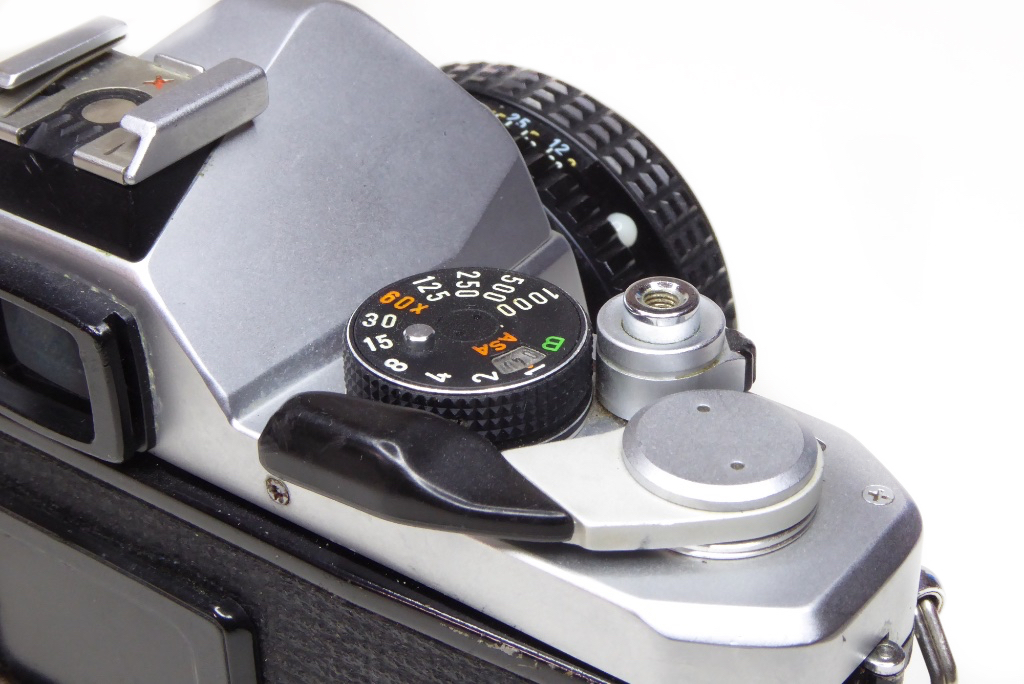
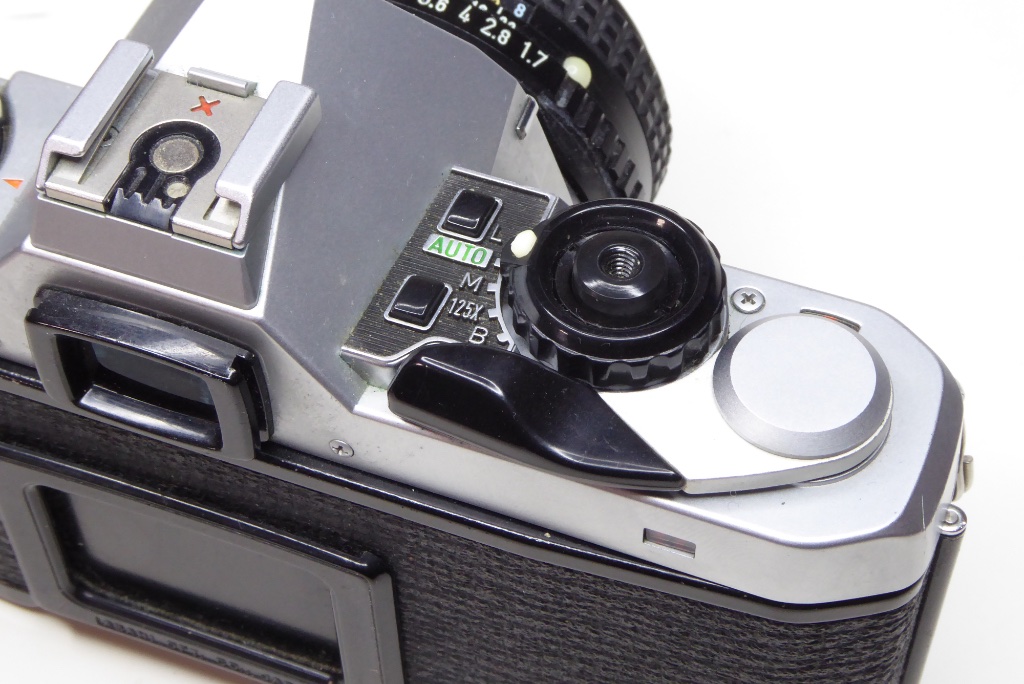
It’s all so obvious now but back then the industry could not be sure electronic cameras would be accepted by anyone. No one knew about possible reliability issues and photography aficionados were reluctant to part with their hard earned cash on new fangled technology which hadn’t been proven. Canon didn’t even try to convert the aficionados but aimed its AE-1 at the people who had never even considered buying a ‘serious’ camera with a low price and the promise of automation to make life easy. Pentax would ignore those kinds of people and aim the MX at the people who favoured a well built, all mechanical camera that was completely traditional in approach. I don’t doubt back in the 1976 many people found comfort in a camera that seemed familiar when they were spending close to two months wages. Plenty of good products have met an early demise due to consumer fear of ‘the new’ when they are too different from the crowd.
So that’s the history what’s the camera actually like…
I came to the MX via a KX and the OM-1. The KX is a splendid camera with just about everything you could ask for in a fully mechanical camera. A match needle arrangement with shutter speed indicated plus an aperture readout via the classic Judas window, Silicon Photo Diode (SPD) metering so the meter is sensitive and more reliable than the older Cadmium Sulfide (CdS) types. Overall its a workhorse – solid and reliable. The OM-1 is one of my all time favourites to use and I owned one in 1976 as my first professional class camera so the MX would have its work cut out to win me over for sure…
So lets look at the camera – you are getting a fully mechanical camera which uses batteries only for its metering system which is based on a Gallium Arsenide cell (GaAS). Why Pentax went with GAaS its hard to say. Very few cameras ever used it. The layout is virtually identical to almost any Pentax 35mm SLR up to the MX and plenty of other 35mm SLRs used the same layout too.
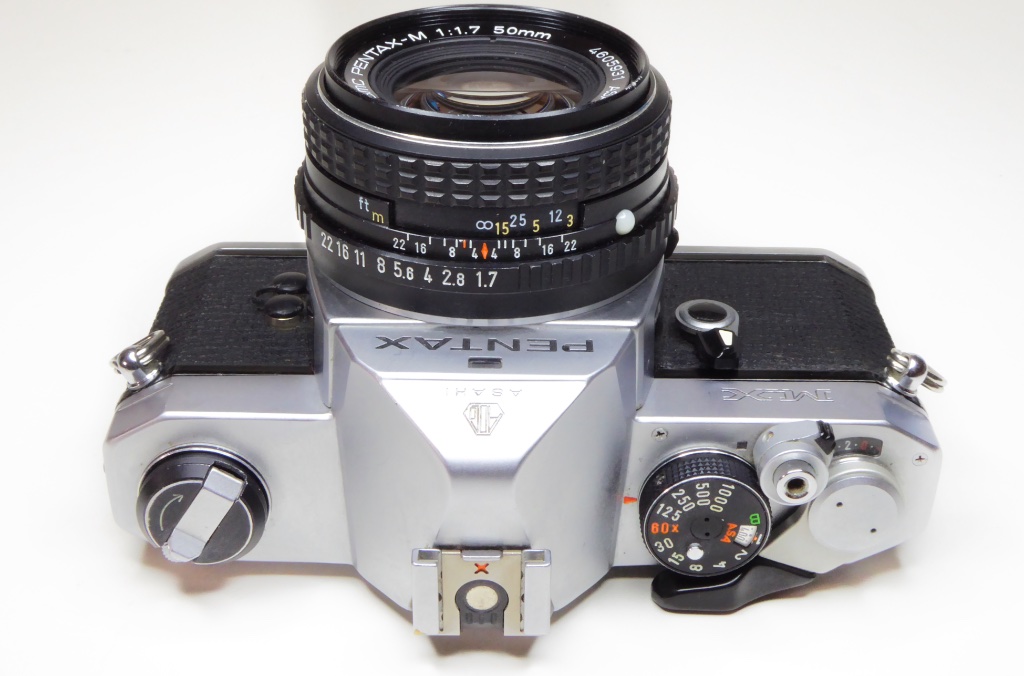
The difference is it’s incredibly small and light, acing even the OM-1 in all areas regarding weight and size and its viewfinder has the highest magnification of any 35mm SLR at x.97 (versus the OM-1 at x.95) . Spectacle wearers beware with the MX – it’s almost impossible to see the whole field of view unless your eyeball is pressed hard against the viewfinder due to the magnification factor. The MX displays about 95% of the film frame, less then the OM-1s impressive 97% but none the less still larger than many 35mm SLRs of its period.
Field of View (FOV) and Magnification
People are often confused about field of view and magnification factors and particularly argumentative when it come to the OM-1 versus the Pentax MX so here’s a simple guide to illustrate the effect these have…
A typical 35mm SLR from around the period of the Pentax MX would present around 93-94% Field of View and typically a magnification factor around the x.85 mark. There’s no doubt the view through the OM-1 is impressive for its expansiveness but of higher value to me is brightness and resolution of the focus screen. A tighter grained screen that’s very bright will make focus easier as well as a higher magnification. It’s worth mentioning also that FOV and Magnification factors will usually be based around a 50mm lens – longer or shorter focal length lenses will change the numbers. For example many Minolta SLRs will return a value of x1 (life size) for magnification when using a 58mm Rokkor.

Left hand view is as you are seeing with your eyeball. Right hand view is an exaggerated minus magnification factor showing how the viewfinder makes things look smaller.

The outer edge is what what will be exposed on the film. The red line simulates what the view will be like in the viewfinder.
Filed of view and Magnification factors are linked. Reduce the magnification factor and the FOV gets wider. Increase it and the FOV narrows. There’s also an issue that both FOV and magnification have an effect on brightness because both affect light transmission so cameras manufacturers have to strike a balance between these opposing factors.
The tiny percentages in the FOV and magnification don’t seem much on paper but they translate to a very striking difference when looking through a camera viewfinder. So which is better the OM-1 with its width or the MX with its higher magnification? I found little to choose between them . The OM-1 has a wider more immersive viewfinder but the MX was brighter and seemed easier to find focus. I could live with either.
It’s not all good news though – That small size and weight of the MX comes with a price. To help trim the size down Pentax used very thin top and bottom plates and as a result the camera is susceptible to damage. A small drop which a ‘K’ series would shrug off will almost always bend the metal on an MX.

One of the nicest features of the MX is its stop down feature – activated by pressing the self timer inwards. It’s one of the best positioned and feeling stop downs I have ever used. Only the Canon FTb can match it for feel and positioning.
The MX has a very precise feel with a soft and smooth feeling advance lever and a very positive shutter release. Mirror damping is excellent and considering the camera is so small and light near miraculous in its lack of mirror slap and vibration. The whole feel with the camera is of precision like a Swiss watch.
Like the OM-1 its has a removable focus screen – Pentax weren’t going to miss a trick on getting the MX to have everything the OM-1 had. The screen is even brighter than the OM-1s though not quite as bright and sharp as the Minolta XDs but it would be a close run thing. Your chances of finding alternate screens are slim to zero these days so it’s best not to mess about with this unless you are very confident. I got the yips super bad when refurbishing our one knowing it’s virtually irreplaceable.

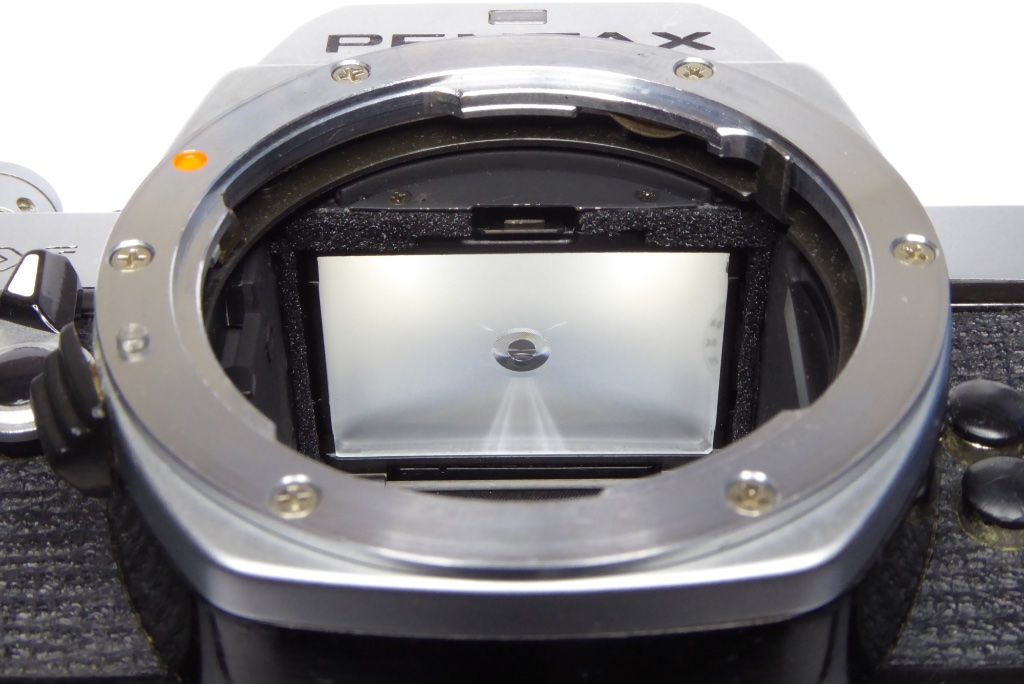
Pentax did though have one thing that maybe they could have NOT copied the OM-1 on and that’s the extremely awkward design of the mirror bumpers. Both the OM-1 and the MX have a hellish set of mirror bumpers which are no fun at all to replace. Pentax even upped the game on this score and made the door hinge seal on the back even more complicated than the OM-1! For a more detailed look at this check out the light seal guide here.
The shutter on the MX is a conventional horizontal type using a rubberised silk curtain. If you get one DO NOT touch this. They are very fragile. Controls are very positive throughout although I did find the ASA dial a bit fiddly. Thankfully that’s not something I tend to change too often.
The camera handles extremely well and its low bulk makes it very attractive to shoot with – I completely enjoyed using our one, its compact size keeps it discrete for street work.
The metering system is somewhat unusual and is managed through coloured LEDs alongside the shutter speed indicator. I prefer a needle as it gives a more nuanced reading but the LED approach with the MX is quite intuitive.
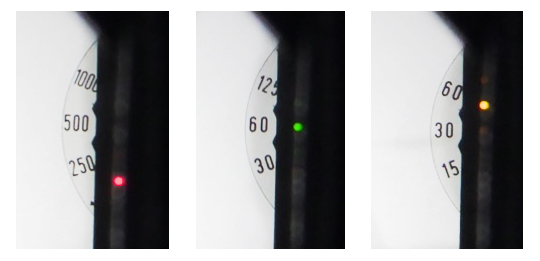
Red LED below centre indicates 1 stop under exposed.
Green LED at centre indicates perfect exposure.
Yellow LED above centre indicates 1/2 stop over exposed.
The meters on the MX have a reputation for trouble which is usually down to corrosion issues with its wiring, battery terminals or shutter switch.
The MX used all of the ‘M’ series lenses developed for the ‘K’ series. These are excellent performers by and large. Most MX units were sold with the standard 50mm f1.7 which is very sharp and like the MX very compact.
Shooting with the Pentax MX
I used our sample for a couple of rolls doing some street photography and found it handled well. It had a nice snap to focus thanks to its excellent focus screen and viewfinder and was suitably discrete. With a short lens on, it’s nicely balanced and slick, almost as unobtrusive as a small range finder. I was more than half inclined to keep it but in the end I decided to sell it on. It’s a lovely camera and deserved to be shot more frequently than I would ever have the time for. It was a tough call as to whether to keep it, but on balance with my larger sized hands I feel a bit more comfortable with the OM-1 or the Minolta XD. It seems, at least for me, Pentax shrunk it down just that little bit too much. Thats not to say there is anything wrong with the MX – its quite delightful to shoot with and if it were the only camera I owned I could be happy. I had sleepless nights trying to decide whether to sell it so I think that tells you something.


The end…
The MX was never a great success in its day, it is estimated that only around a million were sold in almost 10 years compared to an estimated 6 million Canon AE-1s sold in the same period. You can see from the numbers that quality doesn’t always win out!
In the short time I used it I could well see its charms, it’s a very beautiful looking camera, it handles well and shoots marvellously. If you can find a good one, fancy owning a Pentax and don’t want the very agricultural feel of the K1000 so beloved of new age film shooters then an MX is definitely worth investigating. The MX has better handling than a K1000 plus has a self timer and depth of field (DoF) preview. On top of that it has a far superior meter and viewfinder and of course was built as a premium camera where the K1000 was built to be cheap for beginners and students.
The MX would turn out to be the last new all mechanical camera from any of the big 5. There was a brief re-emergence in the 1990s of high quality fully mechanical cameras from the likes of Leica, Contax, Nikon and even Olympus but these were limited production runs with jaw dropping prices (skywards of £2,000 in 1990!).
It seems fitting that the last affordable, high quality, fully mechanical camera would be produced by Pentax who had perfected the original 35mm SLR concept and made it at a price that someone who wasn’t the Duke of Westminster could afford. The MX would be the last of its kind before the electronics revolution and looking back now, it would signal the sense of an ending for the golden age of 35mm SLRs.
Further Reading

Mel is one of the driving forces behind High 5 Cameras and writes all our articles.
Starting serious photography back in 1972. Over the years she got to shoot film with most of the major brands in 35mm and large format as both a studio photographer and content provider for websites in the early life of the web. These days she is rediscovering photography and has become the GOTO person for knowledge on camera repair advice.


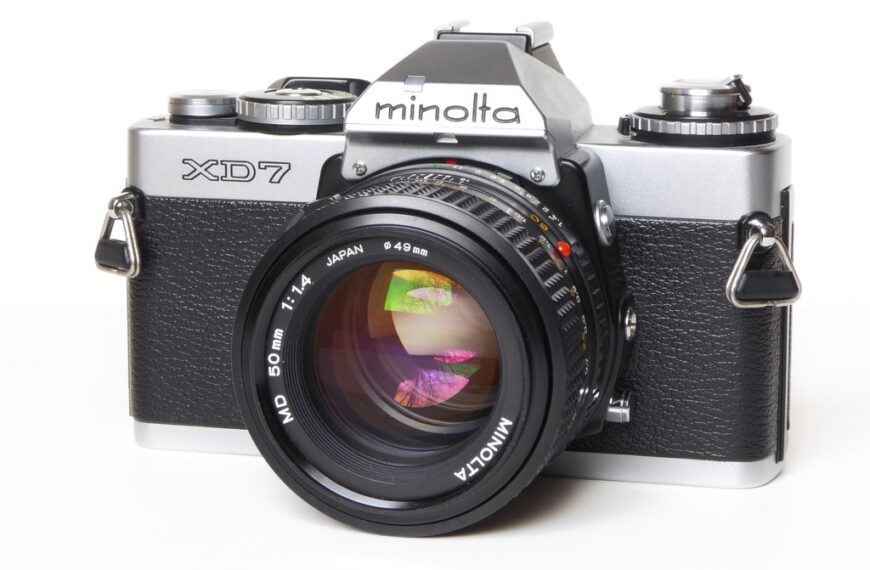
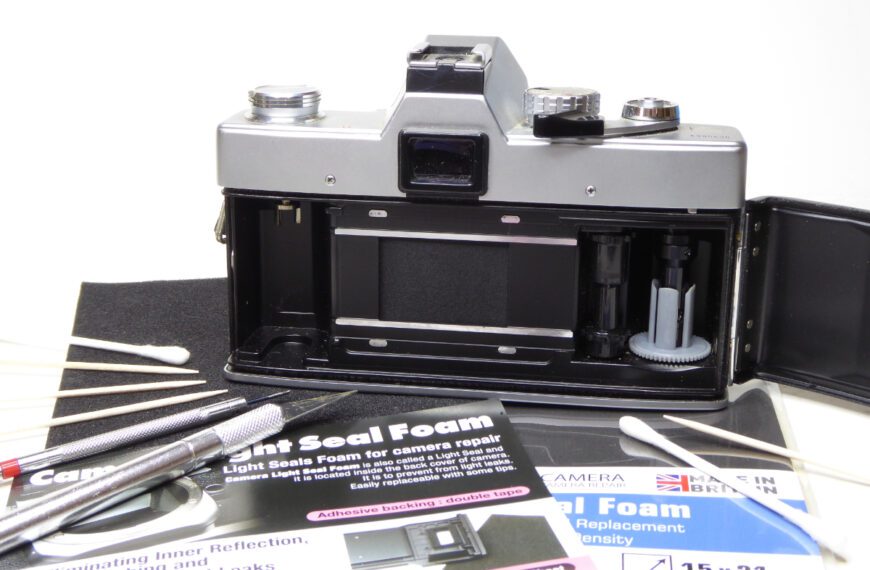
“The last fully mechanical camera to come from any major manufacturer.”
Not quite: Olympus released the fully mechanical OM-3 in 1983.
Ahhh but thats why we said ‘It seems fitting that the last affordable, high quality, fully mechanical camera would be produced by Pentax’.Perhaps we should have added ‘before the AF revolution’.
There was a rash of up market fully mechanical 35mm SLRs in the early 90s. These were a response to a small number of people who were auto-focus averse and who yearned for a return to simpler times. Some exotic cameras were produced by the likes of Leica and Contax, in response Nikon produced the FM2/T and Olympus, after their failed AF system, saw a route to market by basically rehashing an OM-1 to cash in on the market for fully mechanical cameras that were then enjoying a brief moment in the sun before being retired for good.
The MX though was the last fully mechanical camera before all electronic cameras took over and the AF revolution and as such really did give ‘a sense of an ending’ for the golden age. You could make a case of the OM-3 but it was very late to market, withdrawn very quickly and AFTER the auto focus revolution when the world had already turned to plastic and silicon.
In matter of taste there can be no dispute but we hope the article gave you some food for thought.
I preferred the Pentax Spotmatic. Purchased in 1971. Simple. Easy to use. I shot pictures that friends thought were shot on a pin registered camera. Nope. Spotmatic. Sadly it was stolen in San Diego, otherwise I would have kept it to this day.
The Me Super was nice as well. But…. No cigar.
I kind of like the ME Super, its a nice grab and go camera but Mel is more partial to the MX. The Spottie was nice in its day and of course some Spottie owners are very passionate about it. It was a fine camera and of course its design influenced the whole industry for decades.
Food for thought indeed! So, I think you have to draw a distinction between the OM-3 and the OM-3Ti. The OM-3 was released in 1983, a three years before Olympus’ failed attempt at catching onto the auto-focus train, the OM-707. It was released in concert with the OM-4. Together they shared Olympus’ new spot metering system (just my opinion, but maybe the best in a 35mm SLR ever). They were an attempt to bring the OM-1 and OM-2n up to date. Those cameras were once bleeding edge, but frankly by 1983 they were looking long in the tooth and pedestrian (with their 1/1000th top shutter speeds) compared to cameras like the Nikon F3, FM2/FE2, the Canon “new” F-1, and Pentax LX.
The OM-4 was clearly the flagship model. Olympus promoted it lavishly, with wonderful brochures (interestingly, linked brochure also mentions the OM-3 in places, even though it got its own independent brochure) and stylish ads. I have looked high and low, but never found an OM-3 ad. Either way, the marketing materials clearly position the cameras as the high quality, advanced tools of the pro photographer.
Famously, the OM-3 was a marketing and sales dud. People who wanted the latest in cutting edge technology bought the OM-4. People who wanted all-mechanical shutter technology opted for the OM-1n, which remained on sale for far less than the OM-3. Besides, if you were really afraid of battery failure, a battery operated spot metering system probably wasn’t a big selling point.
In 1987, the OM-4 was superseded by the OM-4Ti, which lasted all the way to about 2003. Interestingly, this Olympus dealer price guide from 1988 still lists the OM-3 alongside the OM-4Ti. At that time, all other manual focus OM’s had bit the dust. My guess is this entry just represents the last of unsold new stock. At any rate, the OM-3 vanished somewhere around this time.
Seven years later in 1995 Olympus rolled out the OM-3Ti. It could boast a couple of updates: The titanium body panels, TTL flash (a first on a manual Olympus OM), and flash synch at all speeds with the F280 flash. Now this camera was very much in the vein of similar models released by Contax, Leica, and Nikon: premium “exotic” all manual focus SLRs. These cameras may have had pro specs, but they were really more luxury items than the practical choice of pro’s. In fact, I’ve only heard two rationales for the release of the OM-3Ti: 1) It fell on some sort of anniversary for the Olympus company, 2) Maitani was nearing retirement, and was being honored by the release of an updated version of one of his personal favorite cameras.
I think you would find the article on Vintage 678 here of interest https://www.678vintagecameras.ca/blog/posh-mechanical-slrs-of-the-1990s-worth-it
Thank you so much for the article! I just picked up a Pentax MX on a whim and now I am so so excited.
Do you guys sell, or do you know where I could find, battery replacement for the MX? Mine didn’t come with a battery; it seems like a unique shape. Not sure what I am looking for.
Thank you!
The MX uses standard 1.5 Volt silver cell batteries – the most common designation for these is SR44 – be aware that many eBay and Amazon sellers will state SR44 when in fact the batteries are LR44 types which are alkaline types rather than the more expensive SR44 which are silver oxide.